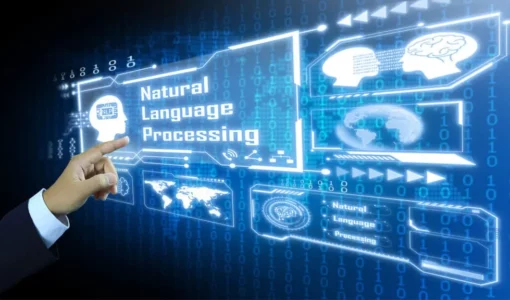AI Fundamentals: How do we teach machines to act like humans? Leave a comment

The two biggest flaws of deep learning are its lack of model interpretability (i.e. why did my model make that prediction?) and the large amount of data that deep neural networks require in order to learn. Overall, LNNs is an important component of neuro-symbolic AI, as they provide a way to integrate the strengths of both neural networks and symbolic reasoning in a single, hybrid architecture. Symbolic AI is reasoning oriented field that relies on classical logic (usually monotonic) and assumes that logic makes machines intelligent. Regarding implementing symbolic AI, one of the oldest, yet still, the most popular, logic programming languages is Prolog comes in handy.
What is symbolic logic examples?
If we write 'My car is not red' using symbols, we would write ¬A. In logic, negation changes an expression's truth value. So if my car is red, then A would be true, and ¬A would be false, or if my car is blue, then A would be false, and ¬A would be true.
This means that they are able to understand and manipulate symbols in ways that other AI algorithms cannot. Second, symbolic AI algorithms are often much slower than other AI algorithms. This is because they have to deal with the complexities of human reasoning. Finally, symbolic AI is often used in conjunction with other AI approaches, such as neural networks and evolutionary algorithms. This is because it is difficult to create a symbolic AI algorithm that is both powerful and efficient.
Leave a Reply Your email address will not be published. Required fields are marked *
And unlike symbolic AI, neural networks have no notion of symbols and hierarchical representation of knowledge. This limitation makes it very hard to apply neural networks to tasks that require logic and reasoning, such as science and high-school math. Henry Kautz,[21] Francesca Rossi,[84] and Bart Selman[85] have also argued for a synthesis. Their arguments are based on a need to address the two kinds of thinking discussed in Daniel Kahneman’s book, Thinking, Fast and Slow. Kahneman describes human thinking as having two components, System 1 and System 2. System 1 is the kind used for pattern recognition while System 2 is far better suited for planning, deduction, and deliberative thinking.
What is symbolic integration in AI?
Neuro-Symbolic Integration (Neural-Symbolic Integration) concerns the combination of artificial neural networks (including deep learning) with symbolic methods, e.g. from logic based knowledge representation and reasoning in artificial intelligence.
Techopedia™ is your go-to tech source for professional IT insight and inspiration. We aim to be a site that isn’t trying to be the first to break news stories,
but instead help you better understand technology and — we hope — make better decisions as a result. It is not enough to have a brain in the abstract, floating in the ether. For our purposes, an academic paper, novel program, or whirling robot fit this definition. As a result, technical explanations are sketched, not finely wrought; there are no equations here.
No Reasoning Capabilities
Arguably, it may also turn out to be a major stepping stone towards human-level artificial intelligence. In particular, in the diagram note that I/O is situated on the symbolic side only, while training is situated only on the neural side, whereas reasoning can happen in either part. The concepts of deep learning and machine learning are often taken interchangeably. While machine learning is a subset of artificial intelligence, deep learning is a subset of machine learning. As the name implies, symbolic AI was built around the idea of symbols and rules.
- With time moving forward, a hybrid approach to AI will only become more common.
- Hybrid AI may be defined as the enrichment of existing AI models through specially obtained expert knowledge.
- In neural systems, though, representations are usually by means of weighted connections between (many) neurons and/or simultaneous activations over a (possibly large) number of neurons.
- The words sign and symbol derive from Latin and Greek words, respectively, that mean mark or token, as in “take this rose as a token of my esteem.” Both words mean “to stand for something else” or “to represent something else”.
- The adherents of this approach believed that almost any aspect of human intelligence can be described – brought to a symbol – in such a way that the machine can simulate it.
- Its perception module detects and recognizes a ball bouncing on the road.
Symbolic AI is a really powerful tool that can solve a lot of issues, but in this article, we won’t cover it deeper as a part of AI because there are a lot of sources already online that describe expert systems. Despite these limitations, symbolic AI has been successful in a number of domains, such as expert systems, natural language processing, and computer vision. Symbolic AI algorithms are used in a variety of AI applications, including knowledge representation, planning, and natural language processing. We also want to state, that we highly value and support the further development of LangChain.
Humans, symbols, and signs
However, by the nature of generative processes syntax errors may occur. By using the Execute expression, we can evaluate our generated code, which takes in a symbol and tries to execute it. However, in the following example the Try expression resolves this syntactic error and the receive a computed result.
Symbolic reasoning systems are good at tasks that require explicit reasoning, but are not as good at tasks that require pattern recognition or generalization, such as image recognition or natural language processing. Summarizing, neuro-symbolic artificial intelligence is an emerging subfield of AI that promises to favorably combine knowledge representation and deep learning in order to improve deep learning and metadialog.com to explain outputs of deep-learning-based systems. Neuro-symbolic approaches carry the promise that they will be useful for addressing complex AI problems that cannot be solved by purely symbolic or neural means. We have laid out some of the most important currently investigated research directions, and provided literature pointers suitable as entry points to an in-depth study of the current state of the art.
Differences between Symbolic AI & Neural Networks
There seems to be a reasonable expectation that deep learning solutions may be much more suitable to address the subsymbolic-symbolic gap than previous connectionist machine learning technology. The lopsided count for first-order logic as opposed to propositional logic illustrates another shift in the subfield. It was discussed in the 2005 survey that a majority of NeSy AI work appears to focus on propositional aspects, it was previously understood that developing NeSy AI solutions is much harder when dealing with logics that are more expressive than propositional logics. John McCarthy indeed used the term “propositional fixation” of artificial neural networks to point this out, as early as 1988 [mccarthy-propfix].
- Symbolic AI algorithms are designed to solve problems by reasoning about symbols and relationships between symbols.
- Such arrangements tell the AI algorithms how each symbol is related to each other in totality.
- The power of neural networks is that they help automate the process of generating models of the world.
- Neural-symbolic Integration, as a field of study, aims to bridge between the two paradigms.
- Their arguments are based on a need to address the two kinds of thinking discussed in Daniel Kahneman’s book, Thinking, Fast and Slow.
- ANI’s machine intelligence comes from Natural Language Processing (NLP).
We started out on our investigations with the hypothesis that the NeSy AI field has shifted focus in recent years, e.g. rendering some of the 2005 dimensions obsolete, at least for the time being. At this stage, however, we remark that the Kautz categories listed above seem to address only Interrelation aspects. However they cover these in a rather different way than the 2005 survey, with a focus on more precise architectural description of the system workflows. These eight dimensions presented a view of the existing facets of the field in 2005, and examples were given for each of the dimensions. It is important to note that they were presented as dimensions, and not as binary values, e.g., a system may fall anywhere on a continuum or even fall under both aspects of the dimension (i.e., span the dimension).
Deep Learning (DL)
It is often more narrowly understood, though, as a reference to methods based on formal logic, as utilized, for instance, in the subfield of AI called Knowledge Representation and Reasoning. The lines easily blur, though, and for the purposes of this overview, we will not restrict ourselves to logic-based methods only. The greatest promise here is analogous to experimental particle physics, where large particle accelerators are built to crash atoms together and monitor their behaviors. In natural language processing, researchers have built large models with massive amounts of data using deep neural networks that cost millions of dollars to train.
But by the end — in a departure from what LeCun has said on the subject in the past — they seem to acknowledge in so many words that hybrid systems exist, that they are important, that they are a possible way forward and that we knew this all along. Humans interact with each other and the world through symbols and signs. The human mind subconsciously creates symbolic and subsymbolic representations of our environment. Objects in the physical world are abstract and often have varying degrees of truth based on perception and interpretation. We can do this because our minds take real-world objects and abstract concepts and decompose them into several rules and logic. These rules encapsulate knowledge of the target object, which we inherently learn.
E2E Networks Received Times Business Award 2023!
For example, they require very large datasets to work effectively, entailing that they are slow to learn even when such datasets are available. Moreover, they lack the ability to reason on an abstract level, which makes it difficult to implement high-level cognitive functions such as transfer learning, analogical reasoning, and hypothesis-based reasoning. Finally, their operation is largely opaque to humans, rendering them unsuitable for domains in which verifiability is important.

Because symbolic reasoning encodes knowledge in symbols and strings of characters. In supervised learning, those strings of characters are called labels, the categories by which we classify input data using a statistical model. The output of a classifier (let’s say we’re dealing with an image recognition algorithm that tells us whether we’re looking at a pedestrian, a stop sign, a traffic lane line or a moving semi-truck), can trigger business logic that reacts to each classification.
Knowledge representation and reasoning
The topic of neuro-symbolic AI has garnered much interest over the last several years, including at Bosch where researchers across the globe are focusing on these methods. At the Bosch Research and Technology Center in Pittsburgh, Pennsylvania, we first began exploring and contributing to this topic in 2017. During training and inference using such an AI system, the neural network accesses the explicit memory using expensive soft read and write operations. They involve every individual memory entry instead of a single discrete entry.
Sanctuary’s Humanoid Robot Is for General-Purpose Autonomy – IEEE Spectrum
Sanctuary’s Humanoid Robot Is for General-Purpose Autonomy.
Posted: Tue, 16 May 2023 07:00:00 GMT [source]
In the Symbolic AI paradigm, we manually feed knowledge represented as symbols for the machine to learn. Symbolic AI assumes that the key to making machines intelligent is providing them with the rules and logic that make up our knowledge of the world. Narrow AI systems are good at performing a single task or a limited range of functions. But as soon as they meet a situation that falls outside their problem space, they fail. Strong AI uses a theory of mind AI framework, which refers to the ability to discern other intelligent entitles’ needs, emotions, beliefs, and thought processes.
As well as outlining the achievements of scurrying robots like “Allen” and “Herbert” (a nice nod to Logic Theorist’s founders), Brooks articulated a new structure for AI programs. In simple terms, Brooks’ “subsumption architecture” splits a robot’s desired actions into discrete behaviors such as “avoiding obstacles” and “wandering around.” It then orders those actions into an architecture with the most fundamental imperatives at the base. A robot with this kind of architecture, for example, would prioritize avoiding obstacles first and foremost, moving up the stack to broader exploration. The advisor in question was Terry Winograd, a Stanford professor, and AI pioneer. The primary goal is to achieve solve complex problems, the difficulty of semantic parsing, computational scaling, and explainability & accountability, etc.
Apple is accelerating hiring efforts for generative AI engineers … – AppleInsider
Apple is accelerating hiring efforts for generative AI engineers ….
Posted: Fri, 02 Jun 2023 11:12:27 GMT [source]
What are examples of symbolic AI?
Examples of Real-World Symbolic AI Applications
Symbolic AI has been applied in various fields, including natural language processing, expert systems, and robotics. Some specific examples include: Siri and other digital assistants use Symbolic AI to understand natural language and provide responses.

